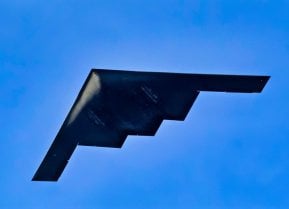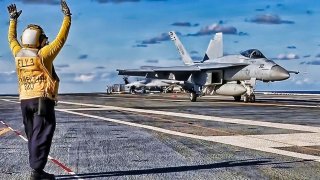The Age of the Aircraft Carrier Isn't Over Just Yet
In the evolving landscape of naval warfare, the supremacy of the aircraft carrier as the ultimate tool for force projection is being challenged by advanced anti-access/area denial (A2/AD) capabilities, particularly hypersonic missiles.
Summary: In the evolving landscape of naval warfare, the supremacy of the aircraft carrier as the ultimate tool for force projection is being challenged by advanced anti-access/area denial (A2/AD) capabilities, particularly hypersonic missiles. With the cost of supercarriers like the USS Gerald R. Ford reaching up to $13 billion, the economic and strategic viability of such investments is under scrutiny. In response, the U.S. Navy is exploring the "Lighting Carrier" concept, utilizing smaller, more versatile ships equipped with F-35B jets, offering a cost-effective and lower-risk alternative to traditional supercarriers in the face of near-peer adversaries' growing A2/AD threats.
Reevaluating Naval Power: The Future of Aircraft Carriers Amid Rising Threats
Since 1945, when the end of World War Two made the aircraft carrier the most important naval weapon instead of the battleship, flattops have ruled the waves. Countries have spent hundreds of billions of dollars designing and building aircraft carriers.
Why, you ask?
Force projection. There are few other weapon systems that can do what an aircraft carrier does.
And when it comes to force projection—letting know friends and enemies that you mean business—the aircraft carrier is the uncontested king.
However, today, in 2024, there are concerns about whether the aircraft carrier is still the go-to weapon for near-peer naval operations.
Technology advancements have created munitions that could penetrate the defenses of a carrier battle group and damage, destroy, or even sink a flattop.
Considering this, the question becomes one of economics and resources. Is it worth it to spend up to $13 billion (that is how much the USS Gerald R. Ford cost American taxpayers) for an aircraft carrier only to be sunk by a missile that costs in the millions?
The Aircraft Carrier Today
Aircraft carriers like the Nimitz- and Ford-class can carry almost 100 aircraft of all types and deploy for months, bringing unparalleled firepower close to a conflict zone. However, advances in technology are threatening the normal use of aircraft carriers.
The Chinese military has potent Anti-Access/Aerial Denial (A2/AD) capabilities. In the event of a conflict with the United States, these capabilities could create a bubble around key strategic targets such as Taiwan. An A2/AD bubble would prevent the use of American aircraft carriers, thus countering their advantages. Hypersonic missiles, in particular, are extremely dangerous.
Navies are reacting to this reality. The U.S. Navy, for example, is bringing back the concept of the light aircraft carrier—now called the “Lighting Carrier” concept. This concept combines a smaller warship, such as an amphibious assault ship, with the appropriate fighter jets, such as the F-35B Lighting II fighter jet with Short Take-off and Vertical Landing (STOVL) capabilities. Although these lighter carriers can carry less aircraft and munitions, they are cheaper and more versatile. Regarding risk, Lighting Carriers carry less risk than supercarriers like the Nimitz-class or Ford-class. Since they are also cheaper, lighting carriers are more expensive for military planners.
Let’s say a conflict breaks out with China, and the Navy needs to dominate the Indo-Pacific with its warships. Considering that the Chinese military A2/AD capabilities, such as hypersonic missiles, that could potentially take out a supercarrier, it would make more sense to send in Lighting Carriers to battle Chinese warships before the Air Force and Special Operations Command (SOCOM) takes out the Chinese missile systems, thus opening the way for supercarriers.
These are just some of the considerations for military planners today. Although the aircraft carrier might not yet be outdated, its supremacy in the seas is under threat.
About the Author
Stavros Atlamazoglou is a seasoned defense journalist specializing in special operations and a Hellenic Army veteran (national service with the 575th Marine Battalion and Army HQ). He holds a BA from Johns Hopkins University and an MA from the Johns Hopkins School of Advanced International Studies (SAIS). His work has been featured in Business Insider, Sandboxx, and SOFREP. Email the author: [email protected].


